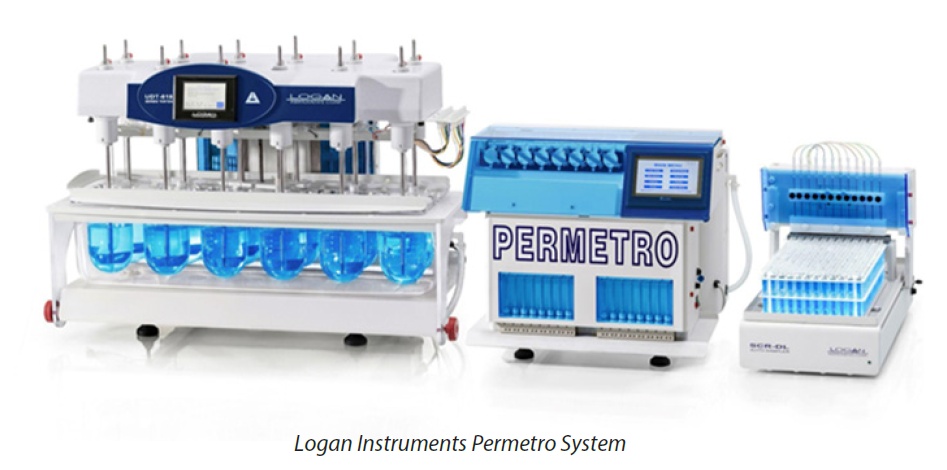In Vitro Dissolution with Permeation and IVIVC: Case Study Using a BCS Class III Drug
For rapidly dissolving dosage forms of BCS Class III drugs (high solubility, low permeability), intestinal permeability is considered to be the major rate-controlling step in oral drug absorption. Absorption kinetics of BCS Class III drugs from the gastrointestinal (GI) tract is controlled by biopharmaceutic and physiologic properties of the drug substance, rather than formulation factors. With Logan’s Permetro system, the goal was to develop a clinically relevant dissolution and permeation method that can be used to predict the oral absorption of a BCS Class III drug, such as acyclovir.
In a recent in-house study, a marketed product (reference) of acyclovir tablets from GSK (800 mg) and a test product were tested for dissolution and gastric permeability using the Permetro technique and the data were compared using similarity factor analysis with the bioequivalence study in human subjects. USP Apparatus 2 (paddle) was used to generate in vitro drug release profiles. Permetro was used to generate in vitro drug permeation profiles by mimicking the in vivo process of drug absorption. The receptor medium was pH 7.4 PBS buffer.
In the dissolution study, greater than 90% of the drug was released in 10 min for the reference drug, and the test drug release rate linearly increased to 95% in 45 min. In the permeation study, the absorptive Papp value of test and reference drugs were comparable. These comparisons show similarity between these two products. In the bioequivalence study, these two products were similar in terms of the preliminary pharmacokinetic parameters, Cmax and AUC.
Comparison of two formulations of acyclovir demonstrated that the Permetro technique may be used as a surrogate technique to predict the bioavailability BCS Class III drugs before product finalization.

For more information about Permetro, contact info@loganinstruments.com.
